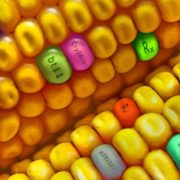A new approach for approving anti-coagulant rodenticide products for non-crop use in the EU will come into force on September 29th. It takes the form of a European Commission decision “addressing questions” regarding the comparative assessments that must be conducted to check if safer alternatives are available before product approvals are granted. The approach advises EU member states that: all available alternatives have limitations in practicality or effectiveness; and that, without anti-coagulant rodenticides, there would be insufficient chemical diversity to minimise the occurrence of resistance. It lists the various indoor and outdoor non-crop uses for anti-coagulant rodenticides, and the range of available chemical and non-chemical alternatives.
The document is based on an opinion from the European Chemicals Agency’s Biocidal Products Committee, and was agreed by member states in July. It accompanied decisions to finally renew biocide approvals for eight active ingredients: brodifacoum, bromadiolone, chlorophacinone, coumatetralyl, difenacoum, difethialone, flocoumafen and warfarin. This ended a long-running EU consideration of the ais, which had triggered hazard criteria that could have resulted in their withdrawal from the market. The renewals designate the ais as candidates for substitution, and impose a wide range of use conditions and restrictions.






